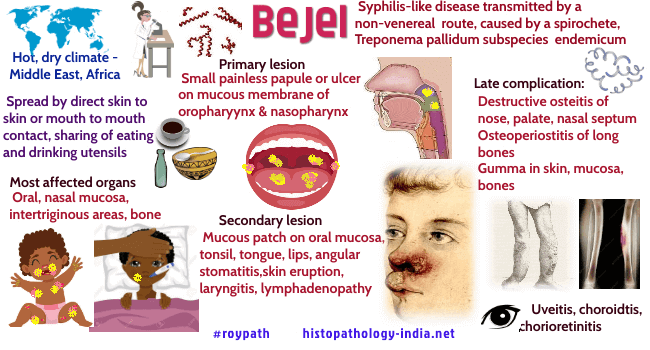|

Custom Search
|
|
Infectious Disease Online Pathology of Nonvenereal Endemic Syphilis ; Bejel
|

|
Syn: Endemic Syphilis ; Nonvenereal Syphilis
Bejel is a syphilis-like disease transmitted by a non-venereal route, such as from an infected baby to the breast of its mother, from mouth to mouth, or from utensils to mouth. Related post: Pathology of Syphilis ; Neurosyphilis ; Congenital Syphilis ; Yaws . Bejel is caused by a spirochete, Treponema pallidum subspecies endemicum. Poor children who live in rural arid areas under unsanitary conditions are commonly affected. Other than on the nursing breast, primary lesions are rare. Secondary lesions in the mouth are identical to the mucous lesions of venereal syphilis and may spread from the upper airway to the larynx. Lesions of perineum and bone and gummas of the breast occur, but cardiovascular and neurologic lesions and congenital transmission are rare. Numerous spirochetes are present in the epidermis, neutrophils invade the skin, plasma cells are prominent in the dermis, and there is a syphilitic vasculitis. Serologic tests for syphilis are positive, but the clinical presentation is different. Penicillin is an effective remedy.
|
|
|

